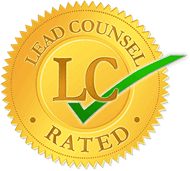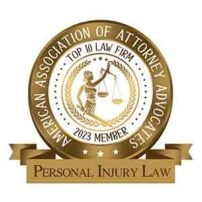Personal injury claims fall under tort law, which is a body of rights, responsibilities, and remedies that aims to compensate individuals who have suffered some kind of avoidable harm. Every successful tort claim has two basic components: liability and damages.
Accident victims need to prove both in order to recover compensation for their economic and non-economic losses. In strict liability cases, such as those involving defective products or dog bites, proving fault can be fairly straightforward. The claimant does not actually have to demonstrate that negligence played a role in the incident.
In all other cases, though, the claimant must prove that the defendant’s action—or failure to take action—was responsible for the scenario that resulted in damages. Since gathering evidence of negligence can be challenging, especially when recovering from serious injuries, it is wise to hire a personal injury attorney.
If you need a reputable accident lawyer in New York City, turn to The Law Office of Richard M. Kenny. Our firm has more than 100 5-star reviews on Google because we are committed to providing unparalleled legal counsel to each and every client. Call our office to schedule a free case evaluation.
Proving Liability and Damages in Your New York Personal Injury Claim
Every successful personal injury claim might come down to just liability and damages, but there are two different steps for proving liability, which means there are ultimately three essential elements of building a winning case. These elements are:
- Establishing that the defendant owed the claimant a duty of care;
- Demonstrating how the defendant breached this duty of care; and
- Proving that the claimant incurred quantifiable damages a result.
Proving Liability
In many accident scenarios, the duty of care is implied. For example, all motorists have a responsibility to those on the road around them to remain alert, attentive, and sober when behind the wheel. Likewise, when an individual turns to a specific healthcare provider for diagnosis and treatment, the physician assumes the duty to provide a reasonable standard of care.
Proving a breach of the duty of care is typically more challenging than proving the duty existed in the first place. The breach is the basis of negligence, though, and whether you can demonstrate it will determine the outcome of your case. Fortunately, a seasoned personal injury attorney will know how to gather the kinds of evidence that might indicate a breach.
In car accident cases, for example, your lawyer might demonstrate the liable party’s negligence with:
- Photographs of the scene;
- Eyewitness testimony;
- Dash cam or surveillance footage;
- Cell phone records;
- Chemical tests; and
- Testimony from accident reconstruction experts.
Proving Damages
You cannot recover compensation unless you incur damages as a result of the other party’s negligent or intentional act. Evidence of damages might include:
- Diagnostic imaging;
- Medical bills;
- Pharmacy receipts;
- Contractor quotes for home modifications;
- Testimony from medical, financial, and vocational experts;
- Income statements and sick time records;
- Photographs of any visible injuries; and
- Journal entries detailing the ways the injuries are affecting your everyday life.
Discuss Your Case with a Personal Injury Lawyer in New York City Today!
If you were seriously hurt or lost a loved one in a preventable accident, contact The Law Office of Richard M. Kenny to discuss your case. Our injury attorneys have more than 100 years of combined experience practicing law. Call our office or fill out our Contact Form to schedule a free consultation.











